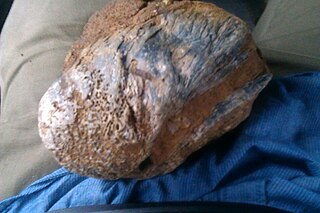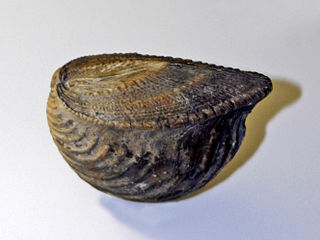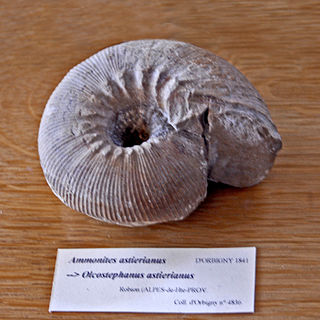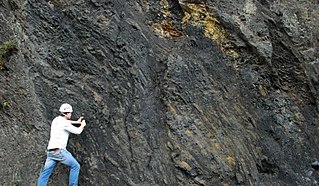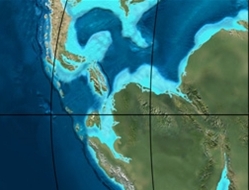| Exogyra Temporal range: | |
|---|---|
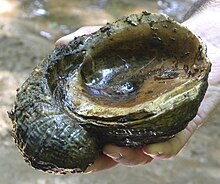 | |
| Exogyra flabellata (Owl Creek Formation, Late Cretaceous, Mississippi) | |
| Scientific classification | |
| Domain: | Eukaryota |
| Kingdom: | Animalia |
| Phylum: | Mollusca |
| Class: | Bivalvia |
| Order: | Ostreida |
| Family: | Gryphaeidae |
| Genus: | † Exogyra Say, 1820 |
| Species | |
See text | |
Exogyra is an extinct genus of fossil marine oysters in the family Gryphaeidae, the foam oysters or honeycomb oysters. [1] These bivalves were cemented by the more cupped left valve. The right valve is flatter, and the beak is curved to one side. Exogyra lived on solid substrates in warm seas[ citation needed ] during the Jurassic and Cretaceous periods. [2]





